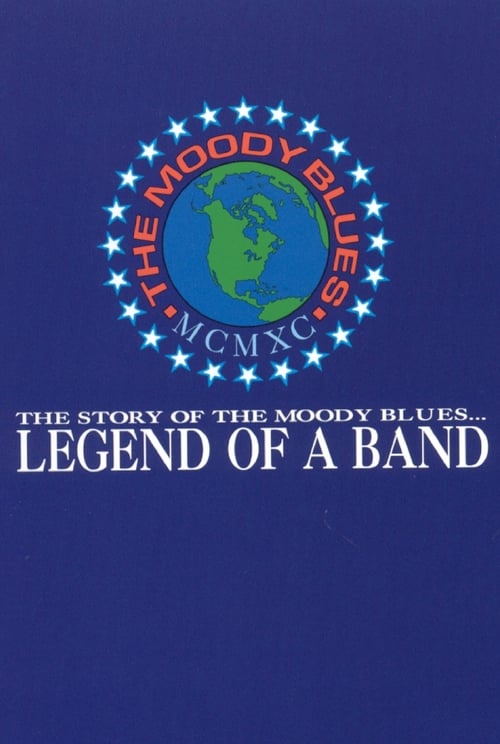
Ask Your Own Question
What is the plot?
More Movies Like This
Browse All Movies →
What is the ending?
In the ending of "Metallica: A Year and a Half in the Life of Metallica," the band completes their tour for the album "Metallica" (also known as "The Black Album"). The film concludes with a montage of live performances, showcasing the band's success and the emotional connection they have with their fans. The final scenes highlight the camaraderie among the band members and their reflections on the journey they have taken together.
As the film progresses towards its conclusion, the narrative unfolds with a series of powerful scenes that encapsulate the band's experiences during the tour.
The first scene of the ending begins with the band preparing for their final show of the tour. The atmosphere is charged with excitement and anticipation. Backstage, the members--James Hetfield, Lars Ulrich, Kirk Hammett, and Jason Newsted--share a moment of camaraderie, reflecting on the journey they have taken over the past year and a half. There is a palpable sense of achievement in the air, as they acknowledge the hard work and dedication that has brought them to this point.
As they step onto the stage, the roar of the crowd is deafening. The lights flash, and the energy is electric. The band launches into their set, performing some of their most iconic songs. The camera captures the intensity of their performance, focusing on James Hetfield's commanding presence as he engages with the audience, and Lars Ulrich's dynamic drumming that drives the rhythm of the show. Kirk Hammett's guitar solos soar through the air, while Jason Newsted's bass lines provide a solid foundation. Each member is fully immersed in the moment, showcasing their passion for music and their connection to the fans.
The next scene transitions to the aftermath of the concert. The band members are seen backstage, exhilarated and exhausted. They share hugs and high-fives, celebrating the successful conclusion of the tour. There is a sense of relief and fulfillment as they reflect on the journey they have shared, both the highs and the lows. The emotional weight of their experiences is evident as they discuss the challenges they faced, including the pressures of fame and the personal struggles that each member has endured.
In the final moments of the film, a montage of clips from various concerts throughout the tour plays, interspersed with behind-the-scenes footage. The visuals depict the band's evolution, their growth as musicians, and the deep bond they have formed. The scenes highlight the joy of performing live, the connection with their fans, and the sheer power of their music. The montage culminates in a powerful performance of "Nothing Else Matters," a song that resonates with themes of unity and introspection.
As the credits begin to roll, the film leaves the audience with a sense of closure. Each band member is shown in their element, reflecting on their journey and the impact they have made in the world of music. The film concludes with a final shot of the band together, united in their passion for music and their commitment to each other, symbolizing the strength of their friendship and the legacy they continue to build.
In summary, the ending of "Metallica: A Year and a Half in the Life of Metallica" encapsulates the band's triumphs and struggles, showcasing their dedication to their craft and the deep connections they have forged along the way. Each member emerges from the experience with a renewed sense of purpose and a stronger bond, ready to face whatever challenges lie ahead.
Is there a post-credit scene?
"Metallica: A Year and a Half in the Life of Metallica" does not have a post-credit scene. The documentary concludes without any additional footage or scenes after the credits roll. The film primarily focuses on the band's journey during the making of their self-titled album, commonly known as "The Black Album," and provides an in-depth look at their creative process, personal struggles, and the dynamics within the band during that pivotal time. The ending encapsulates the band's experiences and reflections, leaving viewers with a sense of closure regarding the narrative presented throughout the film.
What challenges did Metallica face during the recording of the 'Black Album'?
During the recording of the 'Black Album', Metallica faced significant challenges, including internal tensions among band members, particularly between frontman James Hetfield and drummer Lars Ulrich. The pressure to create a commercially successful album led to conflicts over musical direction and artistic choices. Hetfield struggled with personal issues, including his battle with addiction, which affected his performance and emotional state. The band also dealt with the stress of transitioning from their thrash metal roots to a more mainstream sound, which created anxiety about losing their identity.
How did the band members' personalities clash during the documentary?
The documentary showcases the distinct personalities of the band members, particularly the contrasting approaches of James Hetfield and Lars Ulrich. Hetfield is portrayed as more introspective and serious, often grappling with his emotions and the weight of expectations. In contrast, Ulrich is more extroverted and vocal about his ideas, leading to moments of tension when he pushes for changes that Hetfield is resistant to. These clashes are highlighted in various scenes, such as during discussions about song arrangements and the overall direction of the album, revealing the underlying dynamics of their relationships.
What role did producer Bob Rock play in the making of the album?
Producer Bob Rock played a crucial role in the making of the 'Black Album', acting as a mediator between the band members and helping to shape their sound. His influence is evident in the way he encouraged the band to explore new musical territories, pushing them to simplify their arrangements and focus on melody. Rock's presence often led to heated discussions, particularly when he challenged the band to step outside their comfort zone. His ability to balance the band's artistic vision with commercial appeal was pivotal in the album's success.
How did the band cope with the pressures of fame during the documentary?
Throughout the documentary, Metallica grapples with the pressures of fame, which manifests in various ways. The band members express feelings of isolation and anxiety as they navigate their newfound celebrity status. James Hetfield, in particular, is shown struggling with the expectations placed upon him, leading to moments of vulnerability. The documentary captures their attempts to maintain authenticity while dealing with the demands of the music industry, including the need for constant touring and promotion, which adds to their emotional strain.
What insights does the documentary provide about the songwriting process of Metallica?
The documentary offers a behind-the-scenes look at Metallica's songwriting process, revealing the collaborative yet often contentious nature of their creativity. It showcases the evolution of songs like 'Enter Sandman' and 'The Unforgiven', highlighting how ideas are developed and refined within the group. The film captures moments of inspiration as well as frustration, illustrating how the band members contribute their unique perspectives. It also emphasizes the importance of experimentation and the willingness to take risks, which ultimately shaped the sound of the 'Black Album'.
Is this family friendly?
"Metallica: A Year and a Half in the Life of Metallica" is a documentary that provides an in-depth look at the band's life and work during a pivotal time in their career. While it showcases the band's music and creative process, there are several aspects that may be objectionable or upsetting for children or sensitive viewers:
-
Language: The film contains strong language, including frequent use of profanity, which may not be suitable for younger audiences.
-
Substance Use: There are scenes depicting alcohol consumption and references to drug use, reflecting the rock and roll lifestyle that the band was part of during this period.
-
Emotional Struggles: The documentary delves into the personal challenges faced by band members, including themes of anxiety, depression, and the pressures of fame, which may be heavy for some viewers.
-
Intense Performances: The concert footage features loud music and intense performances that might be overwhelming for sensitive viewers.
-
Behind-the-Scenes Tension: There are moments that capture interpersonal conflicts and stress within the band, which may be uncomfortable for some audiences to watch.
Overall, while the film is a significant piece of music history, its content may not be appropriate for all viewers, particularly younger children or those who are sensitive to the themes mentioned.












































